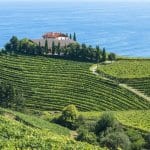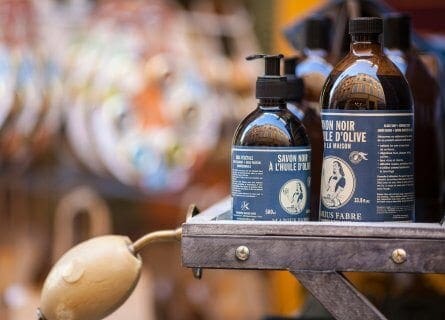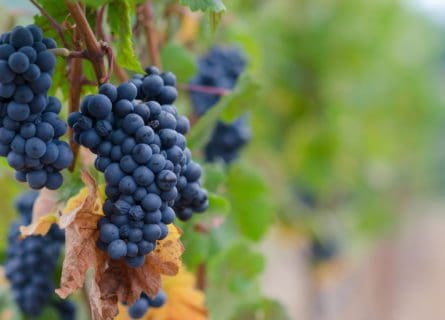
St Jean de Luz Travel Guide
St-Jean de Luz: Where Serene Coastal Charm Meets Vibrant History in the Heart of the French Atlantic
St-Jean de Luz is a unique gem on the French Atlantic coast, a delightful and tranquil village that explodes into life in summer. Located in the French Côte Basques seaside region and sheltered from the mighty Atlantic current, St. Jean de Luz has become a mecca for swimmers and sunbathers in the warmer months. They flock for the impeccably clean beaches and stay for the village’s quaint hotels, unspoiled architecture, and stellar seafood restaurants. Smaller and more intimate than its more famous neighbor, Biarritz, St Jean has the allure of a yet undiscovered resort, as visitors have only relatively recently discovered the virtues of this long-standing Basque fishing port.
Although it is hard to believe when standing in the middle of St-Jean in high season, the village’s fame as the premier destination on the Atlantic coast only really started to grow in the late 20th century. For centuries, this formerly sleepy and unassuming village made its wealth solely from its port and past; St Jean was associated with fishing and pirating. Basque pirates -with the King’s backing – amassed much wealth from their illegitimate activities over the years, and many of the village’s elegant buildings were constructed with this wealth—all part of St Jean’s long and colorful history as a Basque settlement.
The Basques are the region’s oldest inhabitants and have maintained their language and culture throughout the ages despite the area being conquered in the 1st century by the Romans. After the Roman invasion of South-West France, they baptized the region as Aquitania or Aquitaine. The area remained under Roman control for centuries, prospering as a small trading port. However, as the Roman Empire began to crumble in the 5th century, they lost control of the region. In 418 AD, Rome gave the provinces of Aquitania to the Visigoths, tribes from Northern Europe. A period of conflict followed, with several tribes fighting to control this desirable part of the French Atlantic coast.
The Vikings, a tribe from modern-day Scandinavia, conquered the Basque region in 840 during their invasion of Gascony. They held this prize for over a century until the Basque Duke William II Sanchez of Gascony retook the province. He drove out the Scandinavian invaders and reintroduced Christianity to the region; monasteries soon sprung up throughout the Basque country. However, the area soon split into feudal Kingdoms and was not unified until Eleanor of Aquitaine married Henry II of England, giving him possession of the French territories of Aquitaine and Gascony.
This foreign control of the French Atlantic region would continue into the 13th century after Henry III, the English King, appointed Simon de Montford as Governor of Gascony. From hereafter, St Jean would enter a turbulent period of history; during the One Hundred War, England’s Edward I and France’s Philip IV battled for control of the region. Many lives were lost in the bloody battles, and both sides committed atrocities. St Jean’s fate was finally resolved in the Treaty of Paris in 1303, which gave the English King complete control of Autiance.
St. Jean de Luz enjoyed a more peaceful and prosperous existence after the signing of the Treaty and entered its Golden Age in the 17th century; its fame was encouraged by St. Jean’s importance as a coastal stop on the pilgrimage to Santiago de Compostela in Galicia. The village’s prosperity was primarily funded by fishing and whaling, with a good deal of pirating also contributing to St Jean’s good fortune. Many grand residences were built on the back of this wealth in the 17th and 18th centuries, some of which are still entirely intact today. They housed the Basque families and merchants, in addition to accommodating a famous guest in the shape of Queen Mother Anne of Austria.
Queen Anne was in St. Jean to oversee the marriage of Louis XIV to Marie-Therese of Spain following the signing of the ‘Treaty of the Pyrenees between Spain and France in 1659. In arguably the village’s proudest moment, the couple chose the Basque Church of St John the Baptist to host their wedding. At this point, St-Jean became the second-largest town in the region, with a population of over 12,000.
However, this Belle-époque was not free of turmoil or incident; in 1609, more than 600 of the village’s women were accused of witchery by the Church and sentenced to be burned alive! Luckily, they were saved from their judgment as heretics when their husbands returned from a fishing trip and fought to claim their wives. It is the stuff of legends!
St-Jean-de-Luz continued to prosper until the French Revolution in the 18th century, although the Basque region didn’t bear the full brunt of the conflict by any means. After the Revolution and subsequent abolition of the monarchy, a new centralized government abolished the local privileges the ancient regime granted. The village faded into slight obscurity during the late 18th and early 19th centuries, continuing to earn a living through fishing but not sharing in Biarritz’s fame as a fashionable resort.
Nonetheless, St-Jean greeted the 20th century with a quiet sense of optimism as its clean beaches and unspoiled coastline attracted discerning European visitors. Sadly, two World Wars would bring hardship to their citizens; many French young men would never return home during the 1st World War. During the 2nd World War, St-Jean was the scene of a dramatic series of events when Polish soldiers used the village’s beaches to attempt to board their ships to escape to England. The bad weather prevented a German air force attack, and the village citizens helped the soldiers to board the vessel on fishing boats – another proud moment for St-jeans, townsfolk who selflessly risked their own lives to help others.
Although the Basque region did not experience much fighting during World War Two, the French Atlantic zone came under Nazi control. The entire coastline was declared a military zone, placing it off-limits to French civilians (except for local inhabitants, who required a special pass). After the war years, the importance of fishing in maintaining St-Jean prosperity declined as overfishing increased, and competition drove merchants out of business. However, this change encouraged St-Jean to capitalize on its attractions as an upscale resort, and the village started to invest in its tourism industry. The number of holiday homes trebled in the 1960s and 70s – helped by infrastructure improvements – including a new motor route to Bordeaux and Spain.
St-Jean has continued attracting many discerning visitors into the 21st century, maintaining that vital balance between preserving its heritage and developing its potential as a chic holiday resort. While St-Jean may have enough hotels, restaurants, bars, shops, and casinos to satisfy even the fussiest of tourists, its authentic charm lies in its unique cultural heritage, with musical and other events throughout the year. Add to that the legendary Basque talent for gastronomy and, of course, clean, totally unspoiled coast, and it’s not hard to see why hotel guests return every year.
-

Pinxtos, Basque version of Spanish Tapa Gastronomy & Wine
The French take these two things very seriously, and the citizens of St. Jean de Luz are no exception. Its Basque inhabitants take a passion for gastronomy to another level, and some of the finest French cuisine resides in the Basque region. In this locale, exceptional cuisine isn’t merely a choice—it’s a deeply ingrained way of life. To prepare food with anything less than total devotion is to risk the ire of the discerning locals.
St-Jean offers a range of dining options, from simple and (relatively) inexpensive local fare to the finest Haute Basque cuisine with prices to match. Unsurprisingly, seafood restaurants are abundant along the waterfront. Try Pantxua for excellent, traditional Basque seafood dishes and incredible bay views.
As you can imagine, local Basque cuisine is always based on high-quality, local seasonal ingredients rather than elaborate sauces or spice combinations. The Basque people have a long maritime history, and the fish here is unbeatable. Cod, hake, and fresh tuna are popular when the Oysters are in season. They sell out fast! Wild game, hams, and mushrooms are all famous staples of local cuisine. What of the wine? The Basque country produces Txakoli, a crisp white wine that is perfect as an aperitif. The Basque region of Alava produces exceptional red Riojan wines, an ideal match for local game and lamb dishes. Most restaurants in St-Jean will have well-stocked cellars containing excellent wines from Bordeaux and the Languedoc in south-west France; the options are virtually endless. Of course, no feast would be complete without a glass of Champagne – or Cava – as your aperitif.
A Gastronomic Guide to Basque Cuisine: Read more
Nearby Wine Regions
-
 Embark on a sensory journey through Basque Wine Country, exploring its rich terroir and exquisite vintages. Plan your trip today! Read more
Embark on a sensory journey through Basque Wine Country, exploring its rich terroir and exquisite vintages. Plan your trip today! Read more
Highlights
-
Château d'Abbadia
Located outside St-Jean de Luz in Hendaye, this beautiful 19th-century Château enjoys unrivaled views across the Atlantic Ocean. It is a real curiosity, as the exterior of the Château presents a classic medieval design, inside. However, visitors are greeted with oriental design. The owner – Viollet-le-Duc took the unorthodox option of adding an observatory so that scientists could gaze at the stars.
-
Musee de la Mer, Biarrtiz
One of the best aquariums in Europe, the sea museum, is housed in a beautiful art deco building in Biarritz, merely 15 minutes drive away from St. Jean de Luz. Biarritz’s Musée de la Mer is teeming with underwater life from the Bay of Biscay and beyond, as well as exhibits on fishing recalling Biarritz’ whaling past. It’s the seals that steal the show though (feeding time, which is always a favorite with children, is at 10.30 am and 5 pm) – Unmissable if you take the kids!
-
Parc National Des Pyrenees
This stunning area of natural beauty is easily accessible from St. Jean and extends 100 KM along the French-Spanish frontier. It boasts some of the most splendid alpine scenery in Europe and is rich in animals and plant-life. There are over 350KM of footpaths within the park, making it very visitor friendly – an outdoor lovers’ dream.
-
Rhune Train
A small train that runs up the Rhune Mountains in the summer season, offers spectacular and unmissable views of the mountain range. Visitors can catch the train in the town of Ascain, which is about 5km east of St-Jean.
Recommended for you
More information
If you would like us to customize an exclusive luxury tour, contact us and let us know your travel plans. We offer luxury food and wine tours for private groups of a mininium two guests. In addition, all of our private, chauffeured tours are available year-round upon request.














